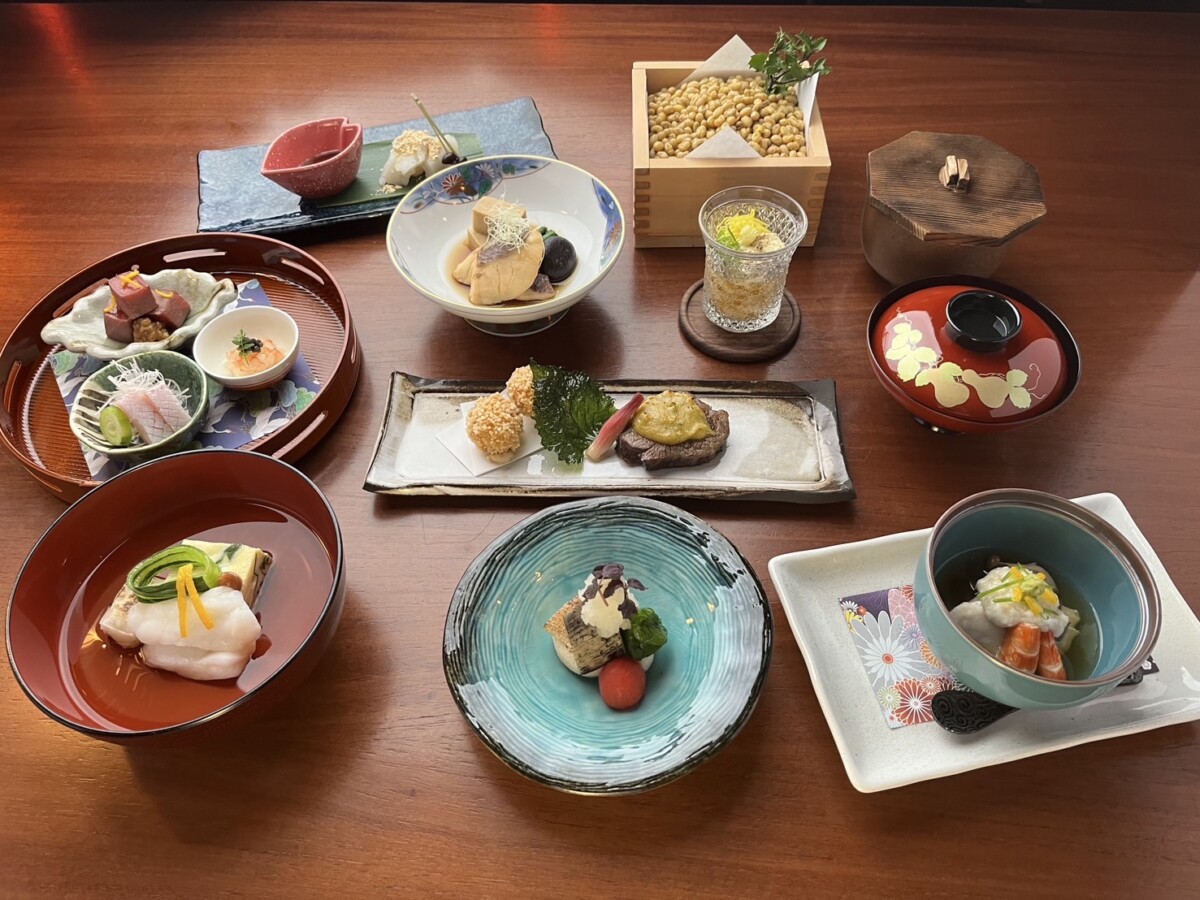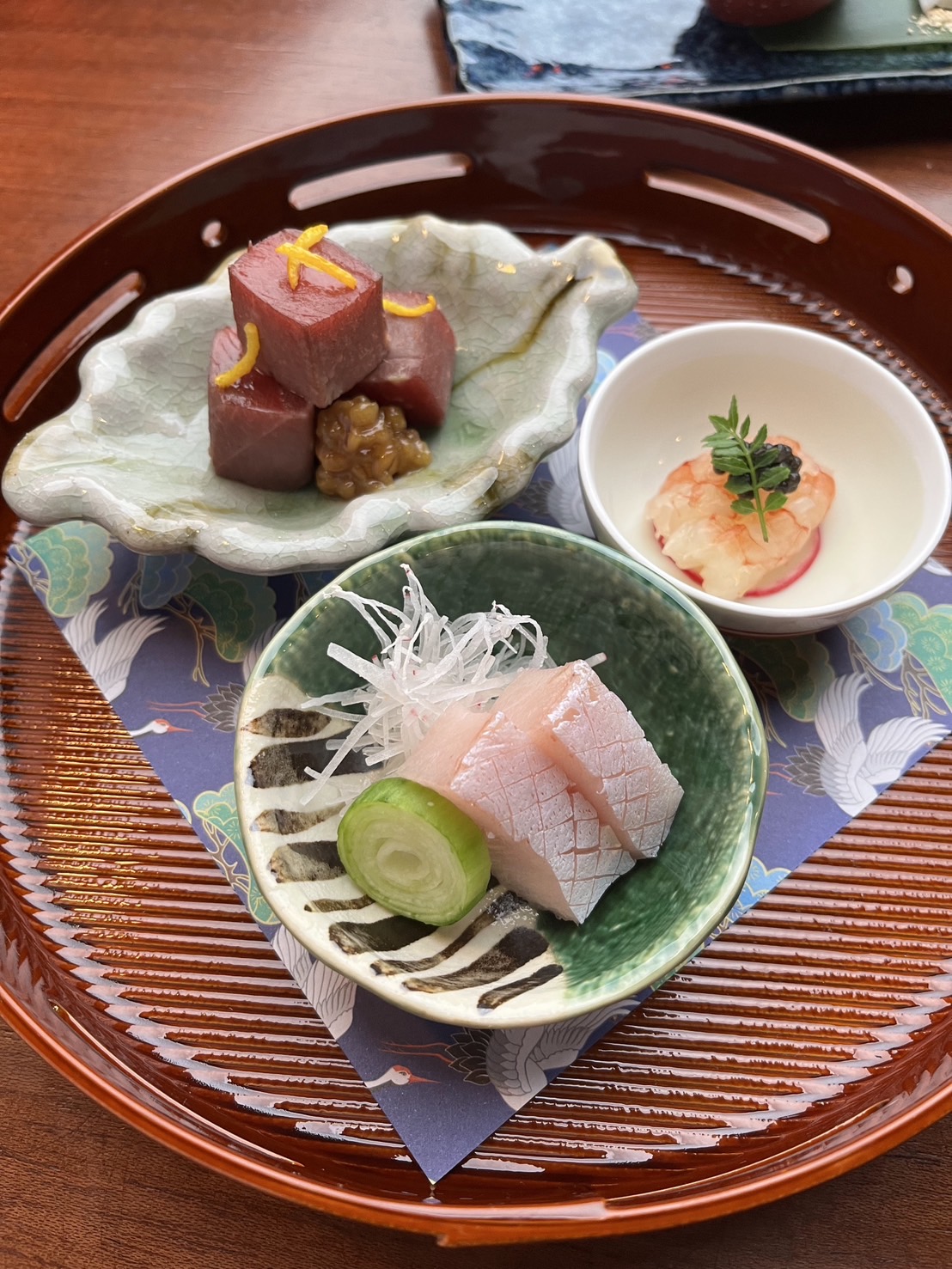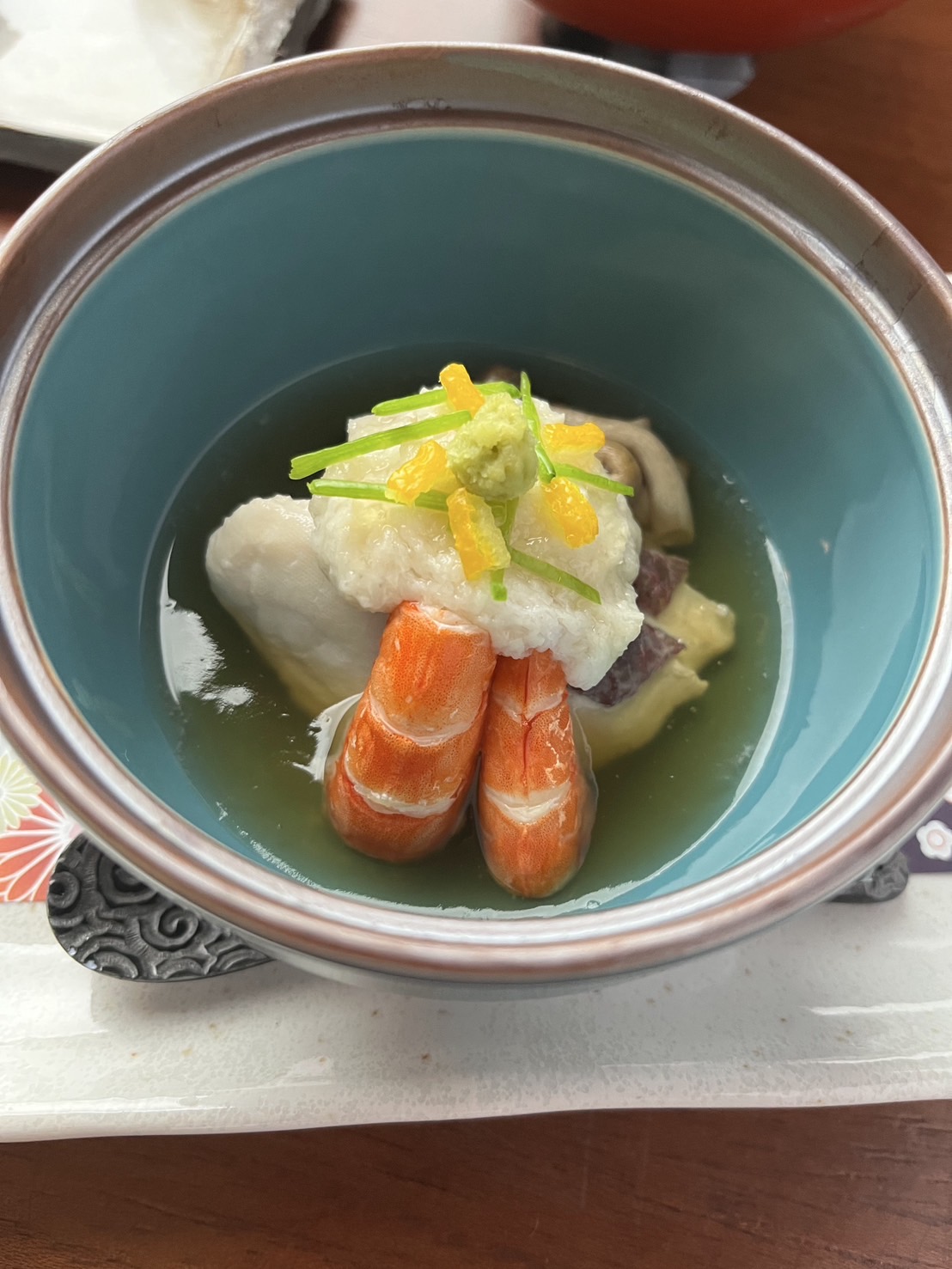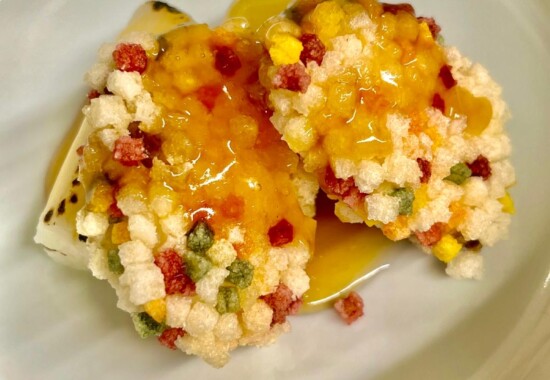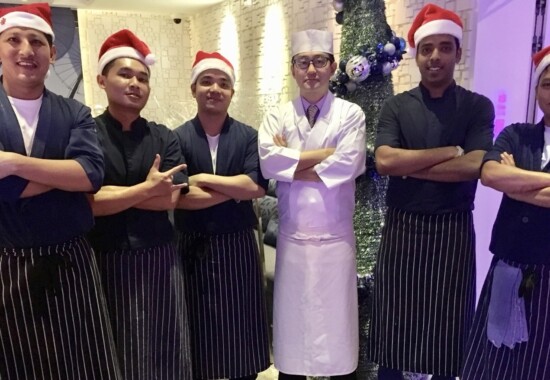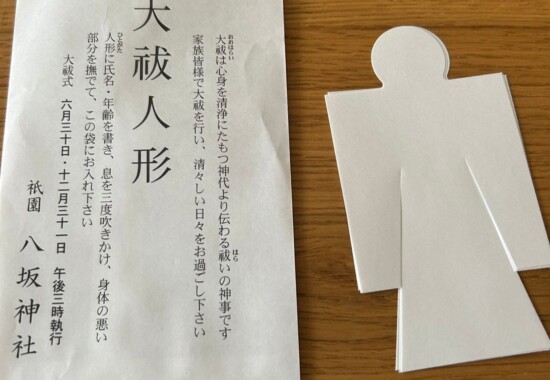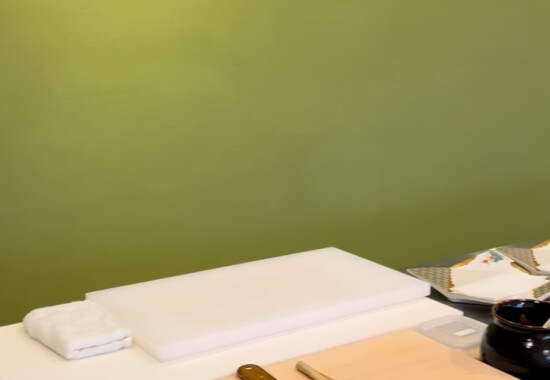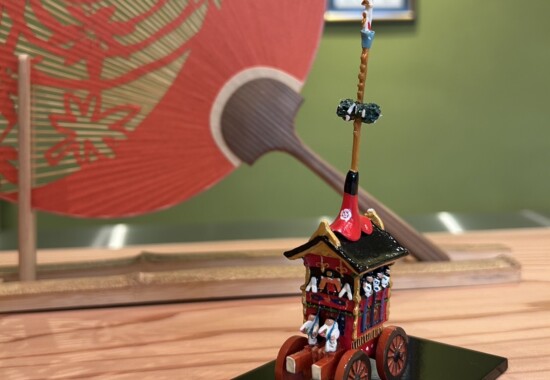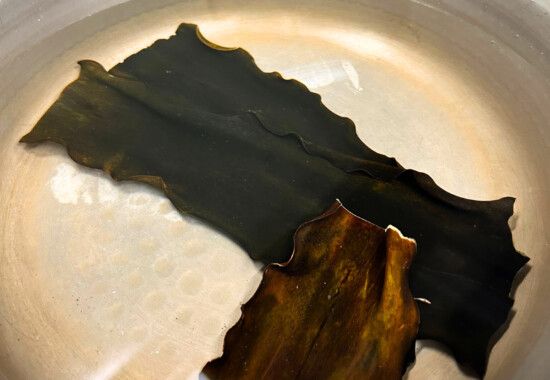About Kaiseki
Recently, we have seen a significant increase in the number of overseas customers who wish to experience Kaiseki dining at our restaurant. Japanese cuisine has many styles, but we are especially delighted that so many people are interested in Kaiseki cuisine.
Now, are you aware that there are two types of Kaiseki? “Kaiseki–ryori” (懐石料理) and “Kaiseki-ryori” (会席料理)? Both originate from “Honzen-ryori”(本膳料理), the traditional Japanese meal system.
The Origin of Honzen-ryori
Honzen-ryori developed during the Heian period within the court culture and was systematized through the samurai culture from the Kamakura period onward. It is based on the concept of “one soup, three sides” (一汁三菜/Ichi-jyu San-sai) and features a series of multiple dishes. The order of serving and the table manners were strictly defined, and the focus was not only on the taste but also on the formality of the meal. Thus, this cuisine has a ceremonial aspect.
Differences between Kaiseki-ryori and Kaiseki-ryori
《Kaiseki-ryori (懐石料理)》
Kaiseki(懐石)-ryori developed during the Muromachi(室町)period as part of the tea ceremony. It is also called “Cha–kaiseki” (茶懐石) and was established by Sen no Rikyū(千利休) within the context of the tea ceremony. The meals served at tea gatherings were simple, based on “one soup, three sides,” intended to fill the stomach before the main course of thick tea (濃茶/Koi-cha) was served.
The term “Kaiseki”(懐石) comes from the practice of Zen monks warming stones and placing them in their robes to keep warm during meditation. Although the kanji for “Kaiseki” (会席) was originally used, during the Edo(江戸) period, the term “Kaiseki”(懐石) became associated with the Zen philosophy to distinguish it from the more festive meal style served at banquets. It is important to note that in recent times, the character “懐石” is often used by many restaurants, even those that do not strictly follow the tea ceremony tradition, simply due to the imagery associated with the kanji.
Kaiseki-ryori (会席料理)
Kaiseki(会席)-ryori, on the other hand, emerged during the Edoperiod alongside the rise of merchant culture. It was developed for banquets and gatherings, such as poetry and linked-verse meetingsfor Haiku(俳句)or Renga(連歌), where food was served as part of the enjoyment of drinking. Unlike Cha-Kaiseki, this Kaiseki-ryori is known for its variety and luxurious offerings.
The term “Kaiseki”(会席) means “to gather and enjoy the meal,” and this style of dining is mainly offered at banquet settings. It departs from the “one soup, three sides” model and includes a wide range of dishes such as sashimi, grilled items, stews, and fried foods. The beauty of the food, its taste, the tableware, and the overall presentation are in perfect harmony.
At our restaurant, we serve Kaiseki(会席)-ryori.
Difference between Kaiseki-ryori and Kappo
Some Japanese customers mistakenly refer to our restaurant as a Kappo(割烹) restaurant because of the counter dining style, which resembles the image of a Kappo restaurant.
While traditionally served in more formal settings, Kaiseki-ryori is also offered at counter-style restaurants, where the chef prepares and serves each dish right in front of the customers. This format adds an interactive element to the dining experience, allowing guests to engage with the chef and appreciate the meticulous preparation of each dish. It creates a more personal and dynamic experience, while still maintaining the elegance and seasonality that defines Kaiseki-ryori.
Here is a simple comparison between Kaiseki-ryori and Kappo:
Kaiseki-ryori
Kappo
Kaiseki-ryori is like a narrative, where each dish represents a chapter, and the meal flows with the changing seasons. On the other hand, Kappo offers a live experience, allowing you to enjoy a one-of-a-kind meal created at that moment.
Depending on your goals and preferences, you can choose the style that best suits you.
Our Commitment
Typically, we begin considering the menu for the following month in the middle of the current month. The chef and the hostess engage in multiple discussions, carefully considering both the chef’s and the customers’ perspectives. By the end of the month, we finalize the menu.
As mentioned earlier, Kaiseki-ryori is like a story, incorporating a well-defined structure with rising action and dramatic turns. Sometimes, the experience is as dynamic as an action movie; other times, it unfolds like an unpredictable mystery novel. Traditional dishes with a sense of stability feel like a heartwarming home drama.
We hope that when you dine with us, you can appreciate the message that the chef has infused into the menu for that month. One of the charms of Kaiseki-ryori is perhaps recognizing the hidden stories and emotions behind each dish.
However, we aim to make Kaiseki-ryori accessible to everyone, without an overly formal atmosphere. Please feel free to contact us if you are interested.


